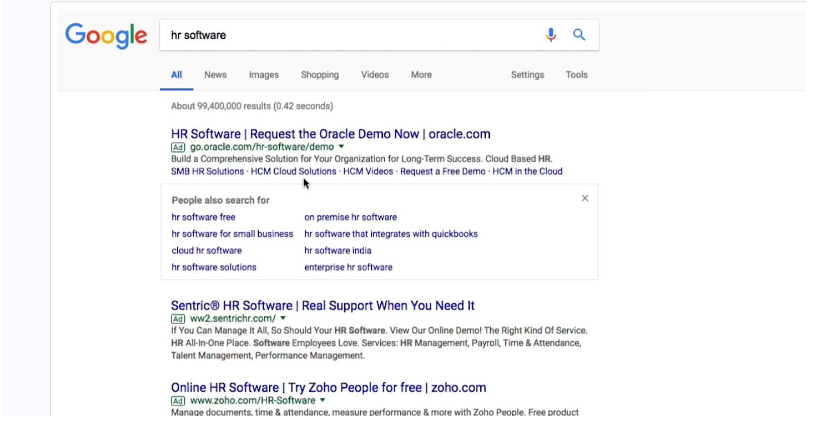How to Use Keywords Naturally on a Website: A Detailed Guide
Keywords are queries that users use to search for information on the Internet. SEO specialists use these queries in website content to improve the visibility of a website in search results. For this purpose, phrases that are closest to the popular queries of the target audience are selected.
The correct use of keywords has long been a major factor in website ranking. Today, search algorithms are transforming — they focus on the user experience (UX) rather than simple mathematical rules of keyword use. Along with them, the rules for using keywords in content are changing.
It is not enough to simply take a ready-made text and stuff it with the right phrases. To achieve success, you need to use keywords naturally. In this article, we will tell you how to use keywords to increase the ranking of your site in the shortest possible time and achieve sustainable results.
How to Naturally Add Keywords to Your Content
SEO specialists use different approaches to working with keywords. But most experts agree that the main phrases that affect the ranking of the page should be introduced into the text in the process of its creation rather than afterward. They should be an organic part of the content, as opposed to an alien element.
To simplify working with keywords, here is a step-by-step algorithm for using them in the content of websites.
Step 1: Choose the Right Keywords
There are many tools for keyword research — complex and simple, paid and free. The principle of their operation is similar. You enter a word or phrase that best describes the essence of your web page. The result is a list of popular queries that can be used to promote the web page.
To correctly add keywords to the text, you need to take many factors into account. Let’s highlight the main rules that will help you achieve results with minimal effort. You need to:
- Focus on the user’s intent. First, determine what exactly they want — to buy a product, to learn more about it, to get a guide to action, or to find the right web page.
- Do not forget to check the search volume of your queries. It is necessary to take into account the optimization strategy. You should realize that it will directly affect the expected results.
- Check the complexity of optimization. Sometimes, low-frequency keywords can be a shortcut to success, provided your competitors ignore them. By choosing them, you can become a leader in a specific, narrow niche.
It’s also important to understand that optimizing your site for keywords should be an ongoing process. Keyword research tool by SE Ranking will help you with this. This comprehensive tool can help you with all aspects of your keyword research process, most importantly with finding relevant keywords, analyzing their difficulty, search volume and other important metrics, as well as getting suggestions for similar keywords.
Step 2: Use Keywords in All Content
Search engines require your content to be relevant to user queries. Therefore, you need to emphasize its topic — and keywords are perfect for this. You need to use them in the meta tags that appear on the SERP — Title and Description. The general rules for using keywords in titles and descriptions are as follows:
- Use them only once;
- Place phrases as close to the beginning as possible, so long as it does not harm readability;
- Use keywords that match the user’s intent. If the article presents instructions for laying bricks, the proposal to sell building materials will be inappropriate in the meta tags;
- Make tags attractive but not clickbait.
Be sure to use keywords in H1 headings and H2 subheadings. If possible, add them to H3 and lower subheadings. Use them only if they inform the reader about the content of the next section and help to structure the material correctly.
Add keywords to the text. It is desirable to include high-frequency queries in the first paragraph, preferably in the direct occurrence. But if it looks inappropriate, this idea can be abandoned in favor of good UX. In general, however, it is allowed to change keywords, declutter them, and dilute them with intermediate words to improve the readability of the article.
Step 3: Avoid Excessive Keyword Stuffing
Keyword density is the relative frequency of a keyword, i.e. the ratio of the number of queries to the total number of words. The optimal value is — up to 5%, depending on the nature of the text and the specific industry to which it relates.

There are methods that will help you avoid excessive keyword density:
- Dilute and conjugate low-frequency keywords;
- If a long query includes a short query, use only the first, omitting the second;
- Cluster similar keywords by combining them into long phrases;
- Choose a query that exactly matches the subject of the paragraph and do not use it again in the text;
- Try to use up to 5-15 keywords per 1,000 words.
Step 4: Use Synonyms and Related Words
We have already mentioned that search engines today use an intelligent approach to ranking websites. They easily determine the general topic of the text by synonymous words and related terms that make the text more natural and help to avoid spamming.
To search for synonyms and related queries, it is best to use special SEO tools. However, you can select keywords indirectly related to your topic without them. Enter your query in Google and check out the “People also search” section, which will provide you with the necessary information.

Step 5. Track your progress and adjust your strategy if necessary
To succeed, you need to continuously track your keyword ranks. The specialized tool we mentioned above will help you with this. It’s important to maintain a positive dynamic — make it to the top and get a foothold there without losing ground to your competitors.
Even the most successful strategy cannot be a static construction. It must change according to shifts in the business environment. You need to exclude and add keywords, regularly update and supplement content as needed, and try new approaches to optimization.
Conclusion
SEO is a dynamic field of activity, its rules change every few months. To successfully optimize your website and make it visible in search engines, you need to follow trends and adjust to algorithm updates.
One of the most effective ways to promote your business today is to use keywords in content naturally. Using keywords correctly will make the text readable, leading to a better UX and, as a result, higher positions on the SERPs.



